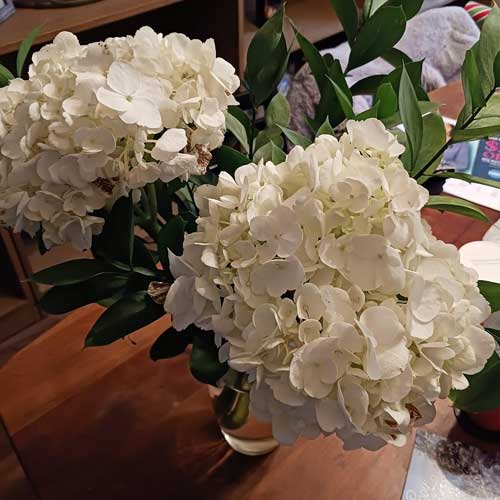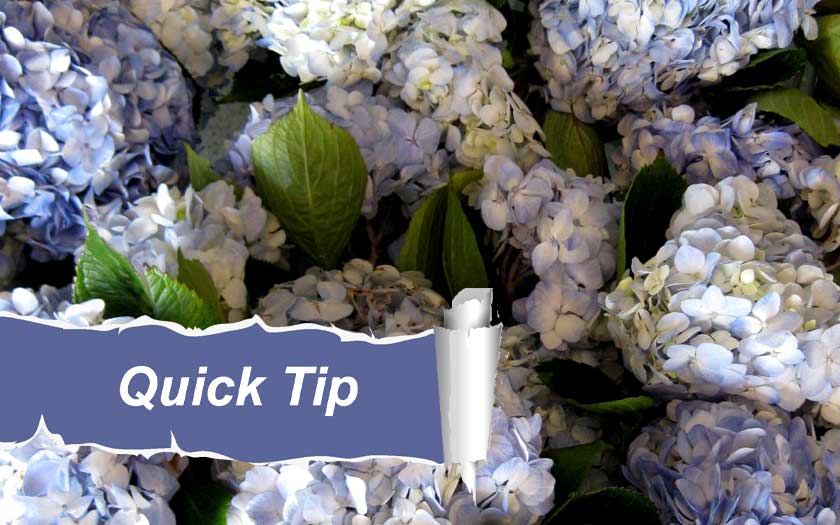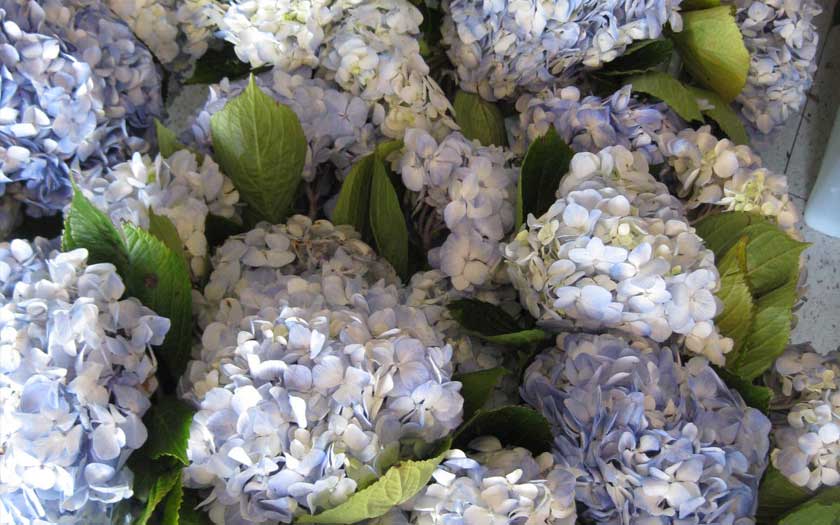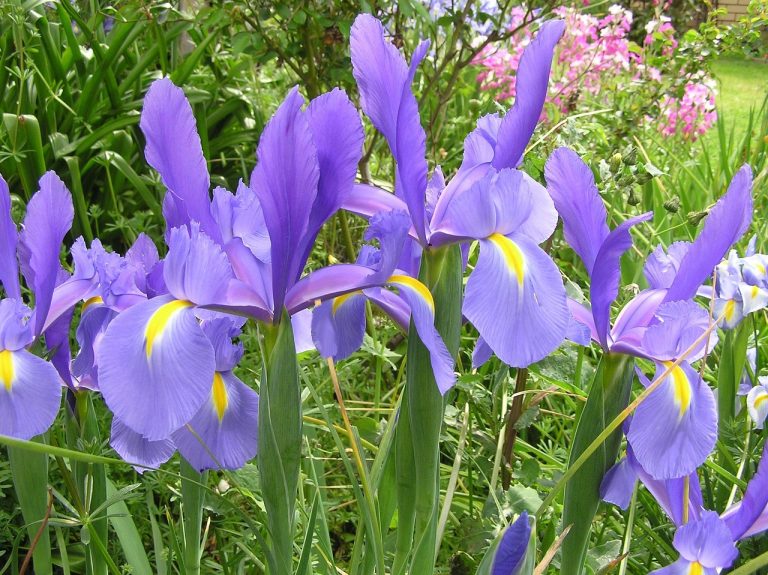Fresh-cut hydrangeas are one of my favorite flowers for floral arrangements, especially large-scale designs for weddings and events, because of their attractive and showy blooms.
Hydrangeas can last several days or longer in an arrangement. These beautiful flowers make a stunning addition to any bouquet. But it’s essential to process and hydrate them correctly to get and keep them looking their best.
Hydrangeas are a popular choice for floral arrangements, especially large-scale designs for weddings and events, because of their attractive and showy blooms.
These gorgeous flowers can last several days or longer in an arrangement. They make a stunning addition to any bouquet. But it’s essential to process and hydrate them correctly to get and keep them looking their best.

In this article, I’ll tell you what steps you must take, what supplies you’ll need, and how to keep your hydrangeas fresh and looking their best for as long as possible.
Processing Hydrangeas Upon Arrival
Start by cutting the stems at an angle using a sharp pair of clippers or a floral knife. Doing so will ensure that the flowers have a larger surface area to absorb water and nutrients, which helps keep them fresh for longer.
Any leaves below the water line should also be removed as these can cause bacteria to form, reducing their vase life. I like to remove all the leaves, even those above the water line, as those leaves divert and absorb water meant for the flower head.
Adding lukewarm water into your container and using flower food as directed will provide the necessary nutrients for the flowers to stay fresh and healthy.
Hydrangeas don’t need to be immediately refrigerated after you process them. At the shop, we leave them out of the cooler for several hours or even overnight, which helps the blooms to develop fully.
Regularly changing and topping up the water every couple of days and recutting stems at an angle helps ensure they continue hydrating.
Following these steps will ensure your hydrangea blooms stay beautiful and vibrant for many days afterward.
I don’t know if processing hydrangeas warrants a ten-minute video, but learning how to process them properly is something you should know, so it’s worth watching.
As you can see, processing cut hydrangeas is easy, but knowing how to do it right is essential. It ensures that your flowers stay healthy and beautiful throughout their vase life and will help you enjoy these lovely blooms longer.
Near the end, the video mentions dipping hydrangea stems in alum after recutting them. Alum, a food additive used in pickling and canning, increases water uptake in woody-stemmed flowers, helping to keep the flowers fresher longer. You can find alum powder in the grocery store spice section.
Florists have been using alum powder for decades, and many swear by it. I use Floralife Quick Dip 100 in the shop, but I’ve used alum at home.

Here are a couple of tips I’d also like to share about handling wilted hydrangeas.
Reviving Wilted Hydrangea Flowers
Don’t you hate purchasing beautiful hydrangeas from a flower shop or other outlet, but after you get them home, they begin to wilt within a day or even hours? I know the feeling, too. Here are a couple of things you can try.
Submerging the Entire Flower
I’ve revived hydrangeas this way many times, both in the shop and at home. It has consistently worked well for me.
Recut the stem and submerge the flower in cold water (50°F) for 2 to 3 hours in your sink, laundry, or bathtub. Remove the bloom, and shake off the excess water from the flower head. Recut the stem, dip the end into Floralife Quick Dip 100 (alum powder will also work), and return it to the vase. Make sure the vase is filled with fresh water at room temperature.
Boiling Water Technique
Reviving wilted hydrangea flowers with boiling water is another way I’ve successfully tried at home. It works because the boiling water breaks down any sap in the stem, blocking the water uptake.
Dip the hydrangea stems in boiling water for 30 seconds to a minute. Recut the stems at least an inch from the end and place them into fresh, room-temperature water. You should notice the improvement in the flowers within an hour or so.
Here’s The Bottom Line
There is no miracle cure for reviving wilted hydrangeas.
Each method’s success depends on how quickly you react to the first sign of your hydrangeas wilting. If you wait too long, you may be unable to revive them.
Correctly processing and recutting the stems, changing the water every 2 or 3 days, and being proactive at any sign of flower distress is the best way to extend the vase life of cut hydrangeas.
Want More Cut Flower Tips Like This?
If you do, sign up below, and I’ll let you know whenever I post new articles. You can also get more tips and advice by following me on social media, where we can continue the conversation.
And before you go, if you found this article helpful, why not share it with your friends?
Til next time,





